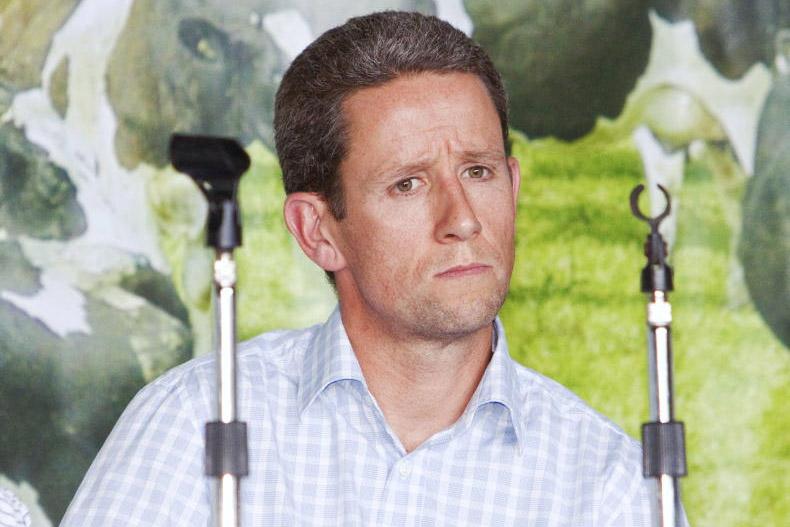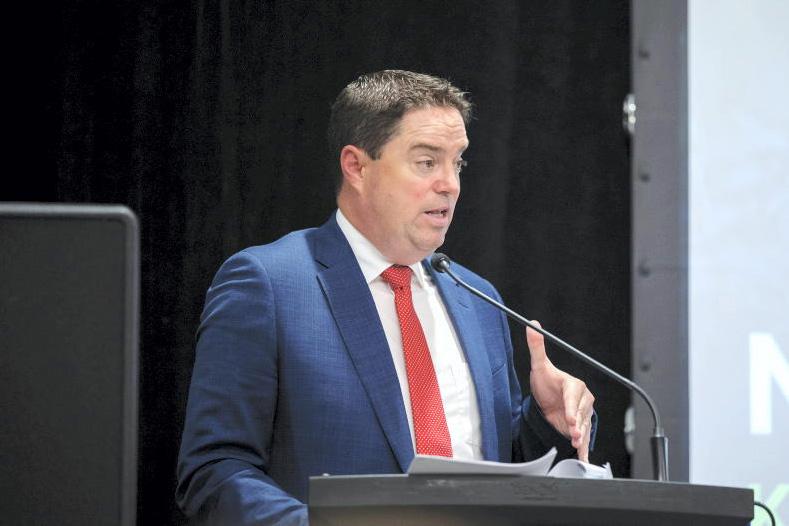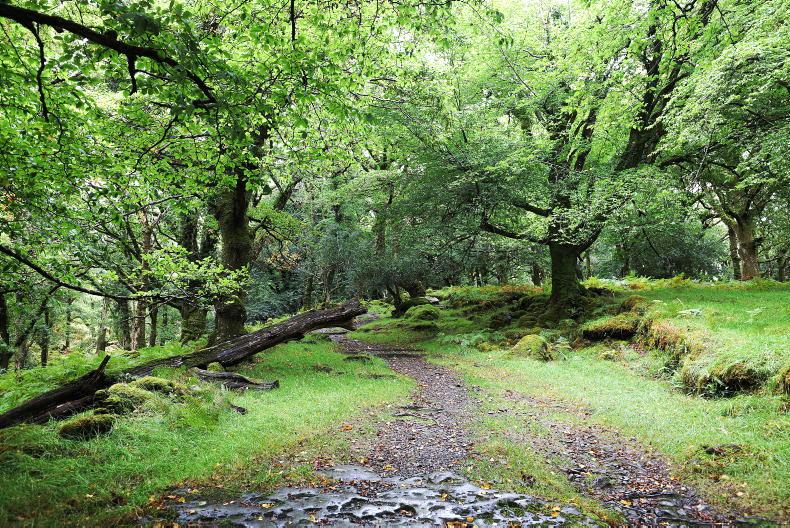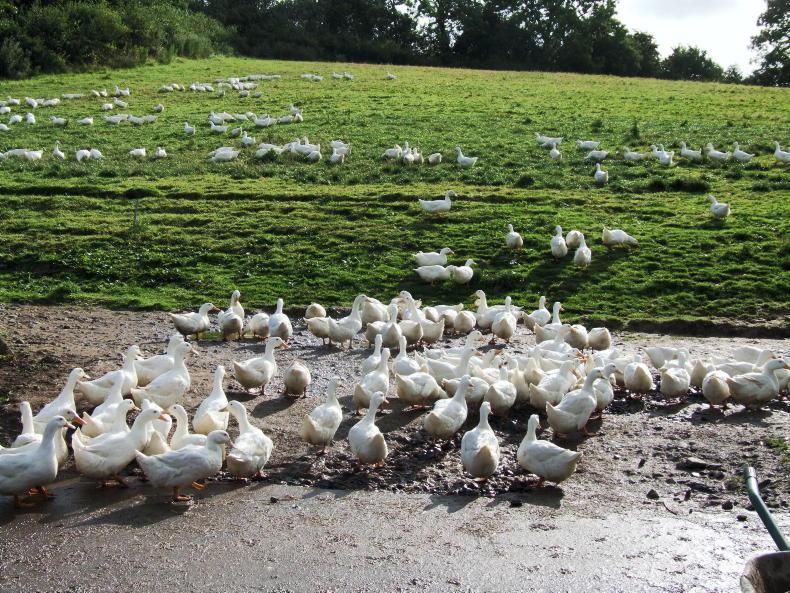The Department of Agriculture has been hosting meetings this week to explain the CAP proposals and to hear the views of farmers.
I say hear, but harvest the view of farmers might be a more appropriate word.
It isn’t really their fault - the format they used wasn’t a Zoom-type meeting, where everybody can be seen and heard.
Instead, the town hall meetings only allowed a limited amount of people screentime.
So the first meeting on Tuesday evening featured a bank of screens of unnamed people, who all turned out to be Department of Agriculture staff.
They explained the current position of Ireland’s CAP strategy with, I thought, great clarity and outlined the variables still in play.
Questions could be submitted by text or email and were answered.
But the 700 people who tuned in couldn’t see the questions and I started getting texts from frustrated farmers who felt the whole event was being stage-managed to prevent any strong criticism or debate.
'Farce'
The IFA called it a farce and demanded speaking rights.
In fairness, when I tuned in a second time on Thursday, those speaking rights had been granted, so we heard the voices of Rose Mary McDonagh, Brendan Golden and Harold Kingston of the IFA asking questions and making points of argument.
One of the Department officials, I think it was Francis Morrin, said that the modelling had shown the full effect of the two chosen scenarios in the first year because that was the year when the biggest change would take place.
And that is entirely true. All of CRISS/front-loading will happen in 2023 and all the €300m of eco scheme money will be taken from entitlements and transferred into that new regime.
The change in payments from this year and next will be significant for everybody
For good measure, the first of four equal steps of convergence will be taken in 2023.
So the change in payments from this year and next will be significant for everybody and pretty shocking for a cohort who will see a cut in their payment of as much as 18% and perhaps 23% if the most extreme model is chosen.
Half the story
But that is only half the story. Because the ultimate outcome is where payments will settle in 2026, when the reform takes full and final effect. And that’s not very far away at all.
If a farmer was considering a purchase of a machine or building or entering into a lease of land, they would want to know how much CAP reform will shrink or grow their direct payment, because that will affect their repayment capacity.
And I know the calculations are complicated. I’m aware there are a number of variables. It’s true that the figures the Department can present are based on assumptions that may or may not turn out to be the final determined shape of CAP payments. So there is a health warning attached.
Scenarios
But it is possible to show the picture for 2026 for any scenario that is presented for 2023. I know this because I’ve done it.
In this week’s Irish Farmers Journal, we presented the figures for 2023 as calculated by the Department of Agriculture for three of the five scenarios contained in their modelling document, released the previous Friday.
And we added two columns, showing the payment for 2026 for each farmer in both the minimum and maximum scenarios presented by the Department.
One column showed the estimated total direct payment for 2026, including the converged BISS, the CRISS and the eco scheme payment. The final column showed the difference in payment between 2021 and 2026.
I’m not saying this to blow my own trumpet - far from it. I only know how to do the calculations because my recently departed colleague Barry Cassidy took the time to talk me through it before he left.
I’m saying this because I think farmers have the right to know how the Department’s proposed scenarios will end up affecting them, as well as how they will start out affecting them.
Absorb the impact
Both are entirely necessary if farmers are to fully absorb the impact of the proposals and frame a response, both on an individual level, and collectively in their various farm organisations.
I think it was a significant oversight of the Department to have failed to have provided this information from the get-go.
I know these figures are head-wreckingly complex, but farmers are able to grasp complex calculations.
A tillage farmer when going to spray a field of barley will have to work out what forward speed to drive at. The variables in play include what pressure to spray at, what water volume he needs to apply, and what nozzle type he is using.
If they are as old as me, they may be bilingual, using a mixture of imperial and metric measures such as litres/acre. And farmers do this every day.
A lot at stake
Similarly, a farmer buying cattle online is calculating potential weight gain of animals based on their frame and current weight, price/kg, and needs to factor in projected feed costs for the coming winter. All in the space of 30 seconds.
So yes, it is going to take time for farmers to get their heads around all this, but there is a lot at stake, and if they are provided with the information, all the information, they will be best placed to evaluate the merits of the proposals.
Just who is the five hectare hero?
There is one other element to the Department’s modelling that I am unconvinced by.
I mentioned the three scenarios we modelled through to their final conclusion in this week’s paper. They were three of five examples used by the Department to illustrate the effect of CAP.
The five scenarios are:
A 5ha farmer with minimum value entitlements of €160/ha.A 5ha farmer with maximum value entitlements of €681/ha.A 20ha farmer with average value entitlements of €261/ha.A 40ha famer with minimum value entitlements of €160/ha.And finally, a 40ha farmer with above average value entitlements of €473/ha.My question is - who are the first two examples meant to represent?
Is someone with 12 acres and minimum entitlements dependant on farming for their income? Perhaps if they are involved in horticulture or fruit, but hardly if they are farming cattle or sheep.
I’d lay odds there isn’t a 12-acre dairy or tillage farmer in the country. It’s quite likely that a lot of 5ha farmers are people with a field and a couple of horses.
The Teagasc national farm survey disregards such farms as “economically insignificant”.
And the high-value 5ha farm is even less likely a scenario. Unless it’s a barrister who bought a field and then bought high-value entitlements to claim on it. If someone did that 10 years ago, they would have been well paid on their investment.
Reading too much into averages
That leaves us with the 20ha farmer and the two 40ha farmers. Not a very broad range to understand the complexity of the mammoth moving of at least €400m, one third of all direct payments from farmer to farmer.
Joe Healy, the recent IFA president, used to warn against reading too much into averages.
"If a person has their head in the oven and the backside in the freezer, their average temperature may be normal, but they are probably in serious bother," he'd say. And extremes may be as misleading as averages.
I understand that extreme examples provide an indication of [clears throat] the direction of travel.
However, we need more examples, and more typical ones, where farmers see themselves reflected in the scenarios. As soon as possible.
Get involved
The meetings were recorded and are available to watch on the Department’s website. I’d advise every farmer to watch them. And then pick up your pen, phone or iPad and send them your thoughts on the current plan.
It’s your future that’s being determined here, you shouldn’t just leave it to others to decide. Have your say.
PS: we need to either ban the use of the phrase “direction of travel” at online meetings or invent a drinking game around it.
The Department of Agriculture has been hosting meetings this week to explain the CAP proposals and to hear the views of farmers.
I say hear, but harvest the view of farmers might be a more appropriate word.
It isn’t really their fault - the format they used wasn’t a Zoom-type meeting, where everybody can be seen and heard.
Instead, the town hall meetings only allowed a limited amount of people screentime.
So the first meeting on Tuesday evening featured a bank of screens of unnamed people, who all turned out to be Department of Agriculture staff.
They explained the current position of Ireland’s CAP strategy with, I thought, great clarity and outlined the variables still in play.
Questions could be submitted by text or email and were answered.
But the 700 people who tuned in couldn’t see the questions and I started getting texts from frustrated farmers who felt the whole event was being stage-managed to prevent any strong criticism or debate.
'Farce'
The IFA called it a farce and demanded speaking rights.
In fairness, when I tuned in a second time on Thursday, those speaking rights had been granted, so we heard the voices of Rose Mary McDonagh, Brendan Golden and Harold Kingston of the IFA asking questions and making points of argument.
One of the Department officials, I think it was Francis Morrin, said that the modelling had shown the full effect of the two chosen scenarios in the first year because that was the year when the biggest change would take place.
And that is entirely true. All of CRISS/front-loading will happen in 2023 and all the €300m of eco scheme money will be taken from entitlements and transferred into that new regime.
The change in payments from this year and next will be significant for everybody
For good measure, the first of four equal steps of convergence will be taken in 2023.
So the change in payments from this year and next will be significant for everybody and pretty shocking for a cohort who will see a cut in their payment of as much as 18% and perhaps 23% if the most extreme model is chosen.
Half the story
But that is only half the story. Because the ultimate outcome is where payments will settle in 2026, when the reform takes full and final effect. And that’s not very far away at all.
If a farmer was considering a purchase of a machine or building or entering into a lease of land, they would want to know how much CAP reform will shrink or grow their direct payment, because that will affect their repayment capacity.
And I know the calculations are complicated. I’m aware there are a number of variables. It’s true that the figures the Department can present are based on assumptions that may or may not turn out to be the final determined shape of CAP payments. So there is a health warning attached.
Scenarios
But it is possible to show the picture for 2026 for any scenario that is presented for 2023. I know this because I’ve done it.
In this week’s Irish Farmers Journal, we presented the figures for 2023 as calculated by the Department of Agriculture for three of the five scenarios contained in their modelling document, released the previous Friday.
And we added two columns, showing the payment for 2026 for each farmer in both the minimum and maximum scenarios presented by the Department.
One column showed the estimated total direct payment for 2026, including the converged BISS, the CRISS and the eco scheme payment. The final column showed the difference in payment between 2021 and 2026.
I’m not saying this to blow my own trumpet - far from it. I only know how to do the calculations because my recently departed colleague Barry Cassidy took the time to talk me through it before he left.
I’m saying this because I think farmers have the right to know how the Department’s proposed scenarios will end up affecting them, as well as how they will start out affecting them.
Absorb the impact
Both are entirely necessary if farmers are to fully absorb the impact of the proposals and frame a response, both on an individual level, and collectively in their various farm organisations.
I think it was a significant oversight of the Department to have failed to have provided this information from the get-go.
I know these figures are head-wreckingly complex, but farmers are able to grasp complex calculations.
A tillage farmer when going to spray a field of barley will have to work out what forward speed to drive at. The variables in play include what pressure to spray at, what water volume he needs to apply, and what nozzle type he is using.
If they are as old as me, they may be bilingual, using a mixture of imperial and metric measures such as litres/acre. And farmers do this every day.
A lot at stake
Similarly, a farmer buying cattle online is calculating potential weight gain of animals based on their frame and current weight, price/kg, and needs to factor in projected feed costs for the coming winter. All in the space of 30 seconds.
So yes, it is going to take time for farmers to get their heads around all this, but there is a lot at stake, and if they are provided with the information, all the information, they will be best placed to evaluate the merits of the proposals.
Just who is the five hectare hero?
There is one other element to the Department’s modelling that I am unconvinced by.
I mentioned the three scenarios we modelled through to their final conclusion in this week’s paper. They were three of five examples used by the Department to illustrate the effect of CAP.
The five scenarios are:
A 5ha farmer with minimum value entitlements of €160/ha.A 5ha farmer with maximum value entitlements of €681/ha.A 20ha farmer with average value entitlements of €261/ha.A 40ha famer with minimum value entitlements of €160/ha.And finally, a 40ha farmer with above average value entitlements of €473/ha.My question is - who are the first two examples meant to represent?
Is someone with 12 acres and minimum entitlements dependant on farming for their income? Perhaps if they are involved in horticulture or fruit, but hardly if they are farming cattle or sheep.
I’d lay odds there isn’t a 12-acre dairy or tillage farmer in the country. It’s quite likely that a lot of 5ha farmers are people with a field and a couple of horses.
The Teagasc national farm survey disregards such farms as “economically insignificant”.
And the high-value 5ha farm is even less likely a scenario. Unless it’s a barrister who bought a field and then bought high-value entitlements to claim on it. If someone did that 10 years ago, they would have been well paid on their investment.
Reading too much into averages
That leaves us with the 20ha farmer and the two 40ha farmers. Not a very broad range to understand the complexity of the mammoth moving of at least €400m, one third of all direct payments from farmer to farmer.
Joe Healy, the recent IFA president, used to warn against reading too much into averages.
"If a person has their head in the oven and the backside in the freezer, their average temperature may be normal, but they are probably in serious bother," he'd say. And extremes may be as misleading as averages.
I understand that extreme examples provide an indication of [clears throat] the direction of travel.
However, we need more examples, and more typical ones, where farmers see themselves reflected in the scenarios. As soon as possible.
Get involved
The meetings were recorded and are available to watch on the Department’s website. I’d advise every farmer to watch them. And then pick up your pen, phone or iPad and send them your thoughts on the current plan.
It’s your future that’s being determined here, you shouldn’t just leave it to others to decide. Have your say.
PS: we need to either ban the use of the phrase “direction of travel” at online meetings or invent a drinking game around it.










SHARING OPTIONS